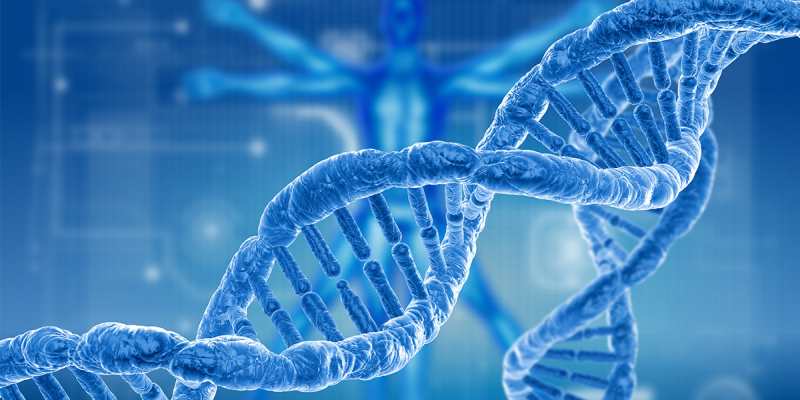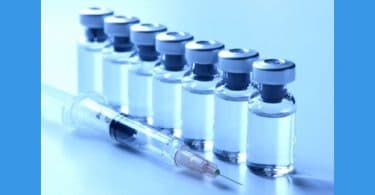After researching the possibility of improving gene expression through diet and supplementation (1 to 5), some researchers have sought to explain how homeopathy can also improve gene expression (6 to 16).
In homeopathic practice, when treating children diagnosed with the autistic spectrum,it has been exciting to observe so many improvements in physical and mental conditions,especially when using classical homeopathy along with homeopathy detox (known as CEASE).
As the population has had greater access to genetic testing, I have seen test results that show mutations in several different genes, often unrelated to genes already described as “defining” characteristics of the autistic spectrum. Sometimes I see improvements in children with genetic mutations compatible with the clinical picture of ASD.
Often I meet families in despair after they came across the results of DNA tests.They feel hopeless, as if those results were a decree for the whole life of their children.The feel as if all the years of treatment and effort were in vain. Some give up treatment. Others move on, seeking the best ways to help their children. Also, many families have benefited from current knowledge of epigenetics (17), caring for their younger children and having healthier children.
I will briefly describe in this article the case of 2 siblings: the oldest, D.A.S., who was diagnosed with ASD, and I.A.S., who at 2 years of age was developing ASD symptoms. The younger had fewer symptoms, having been preventatively taken care of since the first signs appeared.His parents were aware of what could improve his condition from previous experience with his older brother.
Their first appointment with me was in October 2015. The children were 5 and 4 years old, respectively.Checking both of the gestational histories, I found no intercurrents in the mother’s health. In the anamnesis, I noticed only two differences; a single intervention occurred in the gestation of the oldest: the mother received a dose of anti-tetanus vaccine in the second trimester of gestation. And the APGAR score from I.A.S. was 9 while D.A.S.’s APGAR was 8.
D.A.S., the oldest, presented symptoms at 3 years and I.A.S. at 2 years, when D.A.S was already on a special diet and therapies. This difference may have been due to lower parental perception, because D.A.S was the first child and they did not have the same knowledge to detect developmental change symptoms.
We had two appointments prior to the DNA test (Array-CGH), after which D.A.S. had achieved a lower evolution than I.A.S. Before the third appointment, the parents called me, feeling sad, because the result of D.A.S’s examination showed small mutations, which they thought could explain the condition and the little improvement that D.A.S. had been presenting. I.A.S.’s examination was normal, as presented in the annex.
At that time we had done two rounds of detoxification, the layers of corticoids and vaccines that both had received in the years preceding the symptoms. In addition to the detox homeopathy, both received individualized classical homeopathy covering current symptoms and miasmatic influences as well.
My perception of their evolution, taking into account the initial difference in spectrum symptoms, was that both had been progressing well, although gains in I.A.S.’s condition were more noticeable because they were coming closer to normality. But parents felt discouraged after receiving the test results, as if they finally understood the “cause” of so many changes.They wondered if it was worth so much effort to treat D.A.S.?
I knew these parents really well, and that they were not going to give up; they had always done everything for these boys and continued the treatments of both. I told them about other children that I treated, who also have altered genetic tests (compatible or not with autism), or syndromes and others who had neurological lesions, and yet continued to improve from homeopathy, diet and other natural techniques. I asked them to describe the improvements in each child.
I.A.S.had evolved a lot. His speech greatly improved and he was already forming phrases. He still used to cry to get whatever he wanted and had dark circles under his eyes.
They described D.A.S.’s improvements as follows: He learned to lie in order to “get away” from guilt; he pretends and disguises, not looking autistic. He still grinds teeth. He used to run a lot in school; now the support teacher assists and he does not run anymore. but he does not keep up with the class.He knows all the numbers and letters. His anemia has improved. He is impulsive and he hit a ball at the face of his brother. His nervousness was still a big problem.
At this point of treatment, I decided to detoxify the boys from paracetamol, to decrease the mental symptoms of irritability (with aggressiveness in D.A.S. and crying for effect in I.A.S.).
After 3 months, I was pleasantly surprised with D.A.S. talking to me for the first time, showing me a drawing that he had done for me, with a waterfall, two chairs and the two of us sitting with a heart written “I love you”.
I was impressed by how much he improved in this period! He still had to improve his behavior,his hyper-focus on narrow issues and his social manners, but he now showed interest in other people. The parents reported that he was counting the days to see me and that upon arriving from school he wanted to invite their neighbor to play. He was much more focused and developed a fondness for drawing. The teacher said that he is already able to talk, and that he now sits for 4 hours straight for classroom activities.His brother also continues to evolve and today they have a little sister, 8 months old, who is developing wonderfully, without any delays.
D.A.S.’s Genetic Exam
Interpretation of the Results:
Existence of a duplication on the17p12-p11.2 region, minimum size 963kb (15648517-16611188, Hg19). The genes, pseudogenes and miRNAs on this region are: ADORA28, CCDC144A, CDRT15P2, CENPV, LOC101928567, LRRC75A, LRRC75A-AS1, MEIS3P1, MIR1288, NCOR1, PIGL (OMIM:605947), SNORD49A, SNORD49B, SNORD65, TRPV2, TTC19 (OMIM:613814), NF624 e ZSWIM7.
On theClinGen, ClinVar e CNV Morbidity Map of Developmental Delay [PMID: 25217058]databases there are no records of similar duplications.
On the Decipher database two similar duplications are registered (chr17:15688388-16532936, Patient: 253845; chr17:15688588-16532793, Patient: 307715). Those patients present, respectively,intellectual deficit and behavior alterations, speech and language delay.
On the Database of Genomic Variants (DGV)there are no records of duplications of similar size encompassing the same genes. However, Wong et. Al. (2012) describes reference individuals with deletions on the same region detected on the patient [PMID: 23290073].
Therefore, there is no current literature or data the allows to clarify the clinical meaning of the detected duplication, being classified as a VUS (Variant of Unknown Significance).
We highlight that the brother (I.A.S.) also referred to evaluation by aCGHdoes not present this VUS.
Recommendations:
It is recommended to interpret these results within the context of the clinical condition, family history and other laboratory findings.
I.A.S.’s Genetic Exam
Interpretation of the Results:
Absence of CNVs known to be associated with a genetic condition.
In TEA case analyzes, clinically relevant CNVs will be reported on candidate genes listed in the Syndromic categories (when reported to the laboratory autism along with other phenotypes) High Confidence and Strong Candidate from the SFARI database (https://gene.sfari.org/autdb/GS_home.do) until the date of this report.
Recommendations:
It is recommended to interpret these results within the context of the clinical condition, family history and other laboratory findings.
References:
1- Piroddi M1, Albini A2, Fabiani R3, Giovannelli L4, Luceri C4, Natella F5, Rosignoli P3, Rossi T6, Taticchi A7, Servili M7, Galli F1 Nutrigenomics of extra-virgin olive oil: A review.
2- Józefczuk J, Konopka E, Bierła JB, Trojanowska I, Sowińska A, Czarnecki R, et al. The occurrence of antibodies against gluten in children with autism spectrum disorders does not correlate with serological markers of impaired intestinal permeability. J Med Food. 2018 Feb;21(2):181–7. https://doi.org/10.1089/jmf.2017.0069 PMID: 29072974
3- Cekici H, Sanlier N. Current nutritional approaches in managing autism spectrum disorder: A review. Nutr Neurosci. 2017 Aug:1–11. https://doi.org/10.1080/1028415X.2017.1358481 PMID:28762296
4- Chantelle Fourie,1 Yukti Vyas,1 Kevin Lee,1 Yewon Jung,1 Craig C. Garner,2 and Johanna M. Montgomery; Dietary Zinc Supplementation Prevents Autism Related Behaviors and Striatal Synaptic Dysfunction in Shank3 Exon 13–16 Mutant Mice; Front Cell Neurosci. 2018; 12: 374.
5- Jia F1, Shan L1, Wang B1, Li H1, Miao C1, Xu Z2, Lin CP3, Saad K; Bench to bedside review: Possible role of vitamin D in autism spectrum disorder. Psychiatry Res. 2018 Feb;260:360-365. doi:10.1016/j.psychres.2017.12.005. Epub 2017 Dec 6.
6- Constantin C, Muller C, et al. “Identification of Cav2-PCKβ and Cav2-NOS1complexes as entities for ultrafast electrochemical coupling”. Proceedings of the National Academy of Sciences, 2017.
7- Dei A, Bernadini S. “Hormetic effects of extremely diluted solutions on gene expression”. Homeopathy, (2015) 104
8- Thangapazaham RL, Gaddipati JP, et al. “Homeopathic medicines do not alter growth and gene expression in prostate and breast cancer cells in vitro”. Integrated Cancer Therapy (2006).
9- Calabrese E. “Hormesis within a mechanistic concept”. Homeopathy(2015) 104
10- Bigagli E, Luceri C, et al. “Exploring the effects of homeopathic Apis Mellifica preparations on human gene expression profiles”. Homeopathy (2014) 103.
11- Olioso D, Marzotti M, et al. “ Effects of Gelsemium sempervirens L. on pathway-focused gene expression profiling in neuronal cells”. Journal of Ethnopharmacology (2014) 153.
12- Ellanghiyil S, Preethi K, et al. “Induction of apoptosis in tumour cells by some potentiated homeopathic drugs: implications of mechanism of action”. Integrated Cancer Therapy (2012).
13- Saha S, Khuda-Bukhsh A, et al. “Ultra-highly diluted plant extracts of Hydrastis canadensis and Marsdenia condurango induce epigenetic modifications and alter gene expression profiles in HeLa cells in vitro”. Journal of Integrative Medicine (2015).
14- Abha. “Advances in homeopathy: targeting of health promoting genes using sequence specific homeopathic DNA remedies”. Homeopathy 360, bjain.com/homeopathy360-wp/2017/02/18.
15- Rosenblatt, Kuro O.“Klotho, an aging suppressor gene”. Horm. res. (2007) 67.
16- Anisur Rahman Khuda-Bukhsh,aJesmin Mondal, Rajesh Shah Therapeutic potential of HIV nosode 30c as evaluated in A549 lung cancer cells; Homeopathy 2017; 106(04): 203-213 DOI: 10.1016/j.homp.2017.09.001
17- Chopra, D. Tanzi, R. E. Super Genes: Unlock the Astonishing Power of Your DNA for Optimum Health and Well-Being; Harmony, November 10th 2015.




